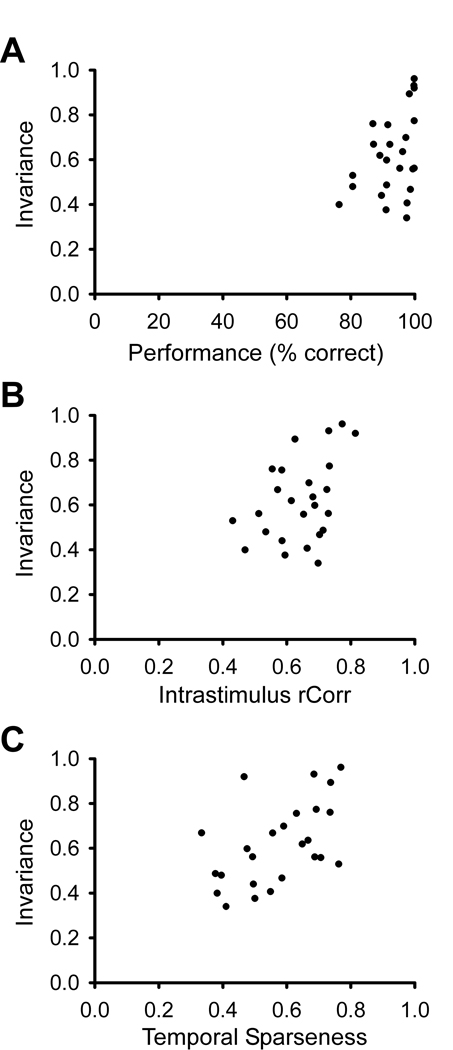Figure 3.
Intensity-invariant neurons tend to show higher maximum discrimination accuracy, higher reliability and/or spike timing precision, and higher temporal sparseness. Correlation coefficients were calculated using the Pearson product moment test before and after using the arcsine transformation on the variables (see Supplementary Online Material). A, Intensity invariance tends to correlate with peak discrimination accuracy in scatterplot (N = 25, CC = 0.497, p = 0.011, before arcsine transform was CC = 0.400, p = 0.0474). B, Intensity invariance also significantly correlates with rCorr, a measure of spike reliability and spike timing precision (N = 25, CC = 0.446, p = 0.026, before arcsine transform was CC = 0.414, p = 0.0397). rCorr is a pairwise correlation measure, taken from spike trains with the same stimulus. C, There is a significant correlation between intensity invariance and temporal sparseness (N = 25, CC = 0.510, p = 0.009, before arcsine transform was CC = 0.515, p = 0.00836). Temporal sparseness is a measure of the firing rate distribution over time, calculated using a binsize of 10 ms (see Methods). Neurons with equal (or similar) firing rates in all bins would have a temporal sparseness value of (or near) zero, whereas neurons with a non-zero firing rate in only one (or a few) bin(s) would have a temporal sparseness index of (or near) 1.

